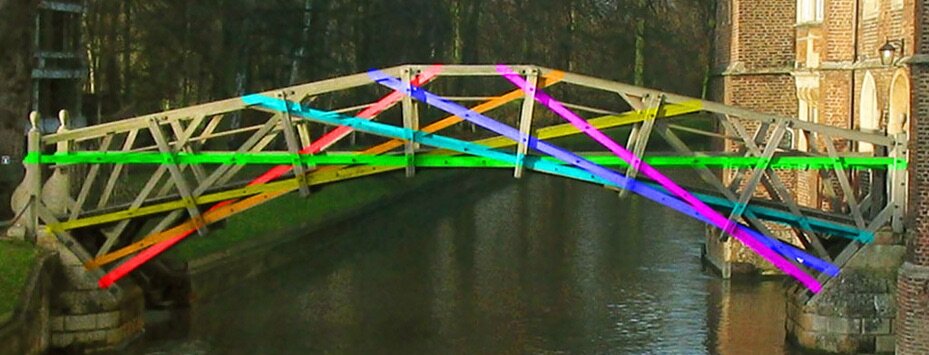Beyond LLMs: Symbolic + Neural Hybrids That Deliver
You’ve probably noticed that even the smartest language models can stumble on facts or logic. That’s because they rely mostly on patterns, not real understanding. By combining neural networks with symbolic reasoning, you’re looking at a new breed of AI—ones that blend data-driven intuition with explicit rules. These hybrids promise sharper accuracy and clearer explanations, especially for tough problems. But how do they actually work, and what does that mean for you next?
The Reliability Gap in Current LLMs
Large language models (LLMs) have demonstrated significant capabilities; however, their reliability raises concerns, particularly in high-stakes applications. Users often encounter issues such as hallucinations and erroneous reasoning, with models like OpenAI's GPT-3 and Gemini Advanced reporting error rates as high as 76.7%.
This reliability gap is particularly critical in fields such as healthcare and finance, where precision is essential and should adhere to stringent standards like Six Sigma.
Additionally, LLMs face limitations due to their fixed context window, which can hinder the coherence of multi-turn dialogue. Even the most advanced models encounter difficulties in maintaining consistent reasoning.
As a response to these challenges, there's an increasing interest in hybrid methodologies that integrate neuro-symbolic AI and symbolic reasoning. This approach aims to enhance dependable reasoning and improve the level of accuracy necessary for developing trustworthy AI systems.
Merging Neural Networks With Symbolic Reasoning
Hybrid AI systems combine the capabilities of neural networks with symbolic reasoning to enhance reasoning processes and improve reliability compared to models using solely deep learning techniques.
In these systems, neural networks are utilized for identifying learned patterns, while symbolic reasoning is applied for structured, rule-based reasoning. This integration fosters cognitive AI that offers explainability, which is important for meeting compliance and transparency requirements.
Hybrid models demonstrate advantages in multi-hop reasoning and tend to perform better than traditional methods in complex, domain-specific areas such as cybersecurity and scientific research.
The approach enables the production of more reliable outputs that are auditable, thereby minimizing instances of inaccuracies commonly referred to as hallucinations.
Multi-Modal AI and Specialized Model Innovations
As AI systems continue to develop, multi-modal models and specialized architectures are increasingly influencing the ways in which machines analyze and manage complex data.
Multi-modal AI now integrates various forms of data, including text and images, as seen in models such as GPT-4 and Google's Gemini. This integration has been shown to enhance understanding and improve diagnostic accuracy in various applications.
Specialized models, such as LQMs (Latent Quasi Models), are being employed to utilize real-world ground truth measurements effectively, which may significantly enhance the efficiency of scientific discovery.
A hybrid approach is gaining traction; neuro-symbolic AI merges machine learning techniques with logic-based reasoning, leading to more reliable and structured analyses, especially when dealing with hierarchical data.
Furthermore, task-optimized hybrid systems that leverage graph reasoning and vector search capabilities are demonstrating superior performance compared to traditional large language models (LLMs) when addressing specialized, domain-specific challenges.
These advancements suggest a trend toward more adaptive and efficient AI solutions in addressing complex real-world problems.
Real-World Applications of Hybrid Intelligence
Hybrid intelligence is playing a significant role in various industries by integrating artificial intelligence with traditional methods to enhance outcomes.
In cybersecurity, hybrid approaches combine neural anomaly detection with symbolic reasoning, resulting in a more effective identification of threats. This integration helps improve detection accuracy and reduces false positives compared to conventional methods.
In the pharmaceutical sector, hybrid intelligence utilizes physics-informed models to simulate molecular interactions, thereby expediting the drug discovery process. These models provide a more nuanced understanding of complex molecular behaviors, which can lead to faster breakthroughs in treatment development.
Additionally, specialized domain-specific models like Learning Query Models (LQMs) help elevate quantitative problem-solving capabilities in scientific disciplines by allowing for more sophisticated data analysis and interpretation.
In manufacturing, hybrid intelligence facilitates predictive maintenance strategies that monitor equipment health and predict potential failures. This proactive approach to maintenance can significantly minimize downtime, leading to increased operational efficiency.
Furthermore, advanced multimodal AI systems, such as GPT-4, integrate diverse data types, including text and images. This capability is particularly beneficial in healthcare, where it can assist professionals in making informed diagnostic decisions by linking patient records with clinical imaging data.
Pushing the Boundaries: Future Directions in Hybrid AI
Building on previous advancements in hybrid intelligence across various industries, current research is focused on further enhancing these systems. One area of exploration involves the development of advanced neuro-symbolic frameworks which aim to improve reasoning capabilities, minimize hallucinations, and enhance interpretability of AI outputs.
Additionally, domain-specific AI models, such as latent quantum models (LQMs) and physics-informed neural networks, are being utilized to tackle complex scientific and quantitative challenges with higher accuracy.
Research is also examining multimodal models, such as GPT-4 and Gemini, which are designed to process and integrate various data types, thus providing more comprehensive insights. There's an emerging emphasis on establishing long-term coherence, facilitating continuous learning, and incorporating human feedback to further refine AI outputs.
These efforts are directed towards creating AI systems that are more reliable, adaptable, and transparent, addressing the needs of real-world applications.
Conclusion
You’re standing at the crossroads of AI innovation, where merging neural and symbolic intelligence overcomes the limits of today’s LLMs. With these hybrid systems, you get more than just smarter models—you gain reliability, transparency, and multi-domain strength. No matter your industry, you’ll benefit from breakthroughs that redefine what’s possible with AI. Embrace this shift, because the future of intelligent, trustworthy, and adaptable AI is firmly in your hands. Don’t just keep up—lead the way.












